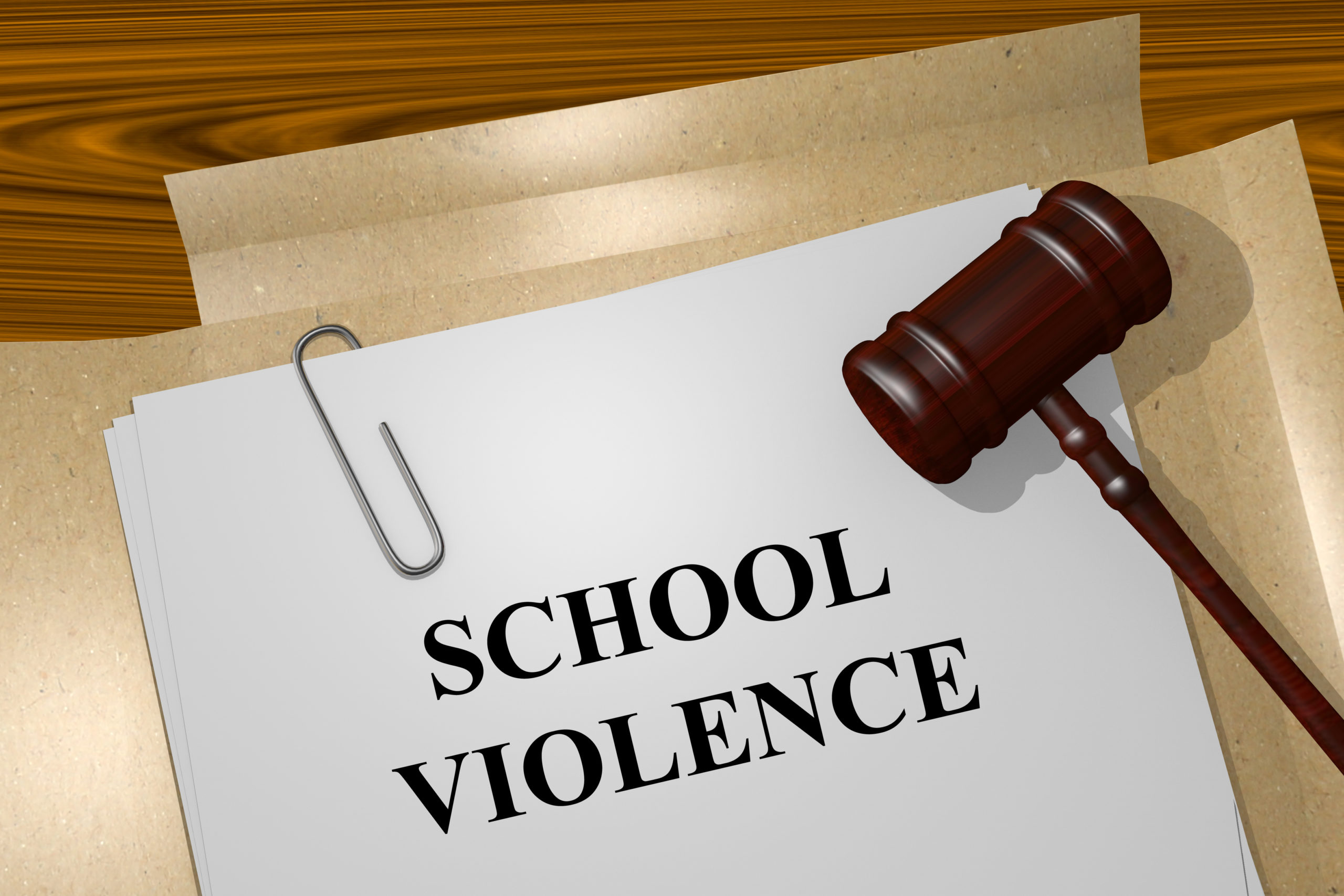
School Violence concept
“Sometimes we are responsible not because we are to blame, but because we are the only ones who can change it.”
– Lisa Feldman Barrett
School violence is a significant public health issue in the United States and is everyone’s problem to solve. Faculty and staff serving on the learning community’s front lines are often in the best position to prevent violence.
Our nation’s schools should be safe havens for teaching and learning. To improve the safety of our schools is to develop a solid foundation of knowledge and best practices[1] that can be implemented through individualized school safety personnel, policies, and activities. This will result in effective and sustainable violence intervention. [2]
The goal of prevention is to prevent a threat or actual incident from occurring. Addressing the factors that lead to violence, and prioritizing prevention efforts, decreases the chance that an incident will occur[3] and improves the well-being of the learning community.
If you are a parent and your kids are in school, then by default, you are an integral member of a national team of school safety advocates that believe that your child’s safety and the safety of their learning environment is a high priority.
Executive protection experts use proven concepts and skills on the job to help keep their very important people safe. These same concepts and skills are also available for preventing violence in America’s classrooms.
All K-12 schools, colleges, and universities are subject to the threat of school violence resulting in injury or death. Such a threat can be introduced to a school in only one of two ways – externally or internally. External threats come from outside the school, and they emerge. Internal threats evolve, coming from inside the school. Either one can develop from a potential threat into an active threat.
HISTORICAL:
History tells us that the first known incident of school violence resulting in death or injury was November 15, 1840. The Richmond Enquirer reported the nation’s first campus shooting, saying John A.G. Davis, a beloved University of Virginia law professor, “was shot by an unknown hand with a pistol.” [4]
School violence, resulting in death or injury, continued for 159 more years, and awareness began to rise only recently. However, it took Columbine[5] to shake the learning community into action on April 20, 1999.
Starting in 1999, initial attempts to stem the tide of rising school violence involved strengthening and, in some cases, introducing physical security that consisted of access control, security cameras, school resource officers, and the like.
Considered the tip of the iceberg, these security measures did introduce traditional physical response options and contributed to better protection.
However, they did (and still do) possess many shortcomings, as illustrated by a case history of subsequent school shootings. Identifying and addressing those shortcomings, partners in the law enforcement community and the judicial system brought sweeping changes to the school property protection landscape.
In the wake of these devastating school shootings, America’s sheriffs, as elected officials, were hard-pressed to respond to the growing concern of their constituents “What more can be done? What additional practices can be implemented to mitigate these school shootings?”
In recent findings, school safety remains in competition with other education environment priorities such as post-COVID re-integration into the physical campus, diversity training, and the like,
NATIONAL SHERIFF’S ASOCIATION
The National Sheriffs’ Association (NSA) has a new initiative to promote and accelerate tangible resources to build and maintain protocols that insulate schools from violence. They have launched the School Safety Recognition Initiative (SSRI) to help reestablish school safety as a top priority. The new initiative encourages learning environment managers to minimize potential threats and maximize resilience while providing insight into public safety.
The School Safety Recognition Initiative is a voluntary self-assessment process designed for schools to gain national recognition from law enforcement school safety stakeholders[6] for their efforts in implementing and maintaining effective school safety, security, and emergency preparedness approaches.
An online application consisting of a brief self-assessment in multiple categories is available to any American school. Once submitted, the information is then reviewed and evaluated. Qualifying school organizations receive a letter of recognition, including the logos of all participating school safety stakeholder collaborators.
School leadership, the judicial system, law enforcement community stakeholders, and their federal partners continue in their efforts to make our schools secure places of learning where teachers can teach and students can learn without the fear of being killed in their classrooms.
To introduce this opportunity to your school or to find out more about the NSA School Safety Recognition Initiative[7], click on School Safety Recognition Initiative Application | NATIONAL SHERIFFS’ ASSOCIATION
REFERENCES:
[1] https://www.secretservice.gov/data/protection/ntac/usss-analysis-of-targeted-school-violence.pdf Page 53
[2] https://www.ncjrs.gov/pdffiles1/nij/247757.pdf
[3] https://www.schoolsafety.gov/prevent
[4] First reported school shooting in America
[5] Columbine High School massacre
[6] Members of the National Law Enforcement School Recognition Initiative Advisory Board include the National Sheriffs’ Association (NSA), Federal Law Enforcement Officers Association (FLEOA), International Association of Chiefs of Police (IACP), Major County Sheriffs’ Association (MCSA), National Association of School Resource Officers (NASRO), National Association of Women Law Enforcement Executives (NAWLEE), and the National Association of Black Law Enforcement Executives (NOBLE).
[7] The school application process is currently slated for public activation on or about June 3, 2022.














